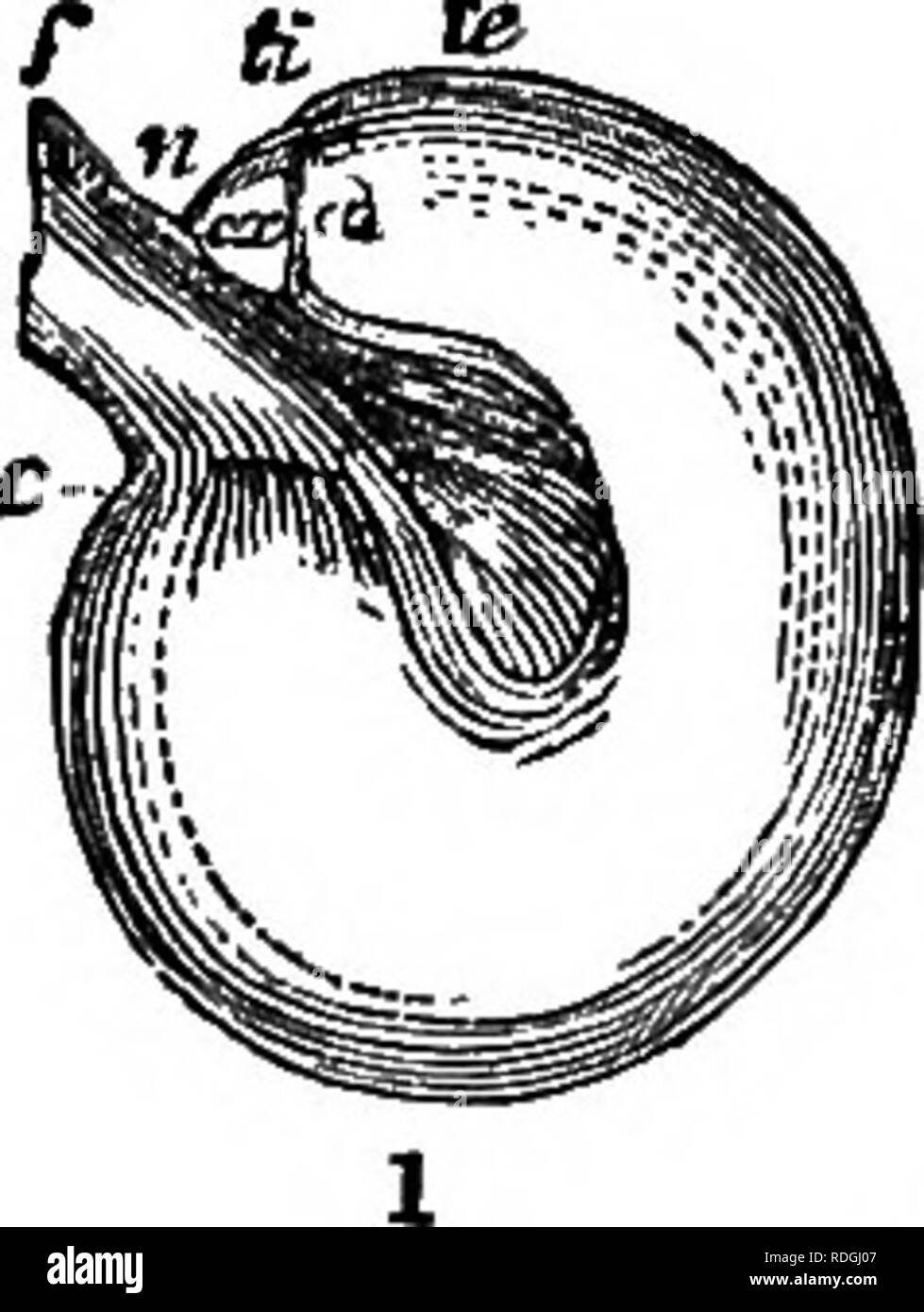. A Manual of botany : being an introduction to the study of the structure, physiology, and classification of plants . Botany. ESSENTIAL OEGANS—THE OVULE. 255 ments are united at the base of the ovule by a cellulo-vascular process called the chalaza (fig. 458 ch). This is often coloured, of a denser texture than the surrounding tissue, and is traversed by fibro- vasoular bundles, which come from the placenta, to nourish the ovule. When the ovule is so developed that the union between the primine, seoundine, and nucleus, with the chalaza, is at the hilum or base (next the placenta), and the for

Image details
Contributor:
The Book Worm / Alamy Stock PhotoImage ID:
RDGJ07File size:
7.1 MB (248.2 KB Compressed download)Releases:
Model - no | Property - noDo I need a release?Dimensions:
1372 x 1821 px | 23.2 x 30.8 cm | 9.1 x 12.1 inches | 150dpiMore information:
This image is a public domain image, which means either that copyright has expired in the image or the copyright holder has waived their copyright. Alamy charges you a fee for access to the high resolution copy of the image.
This image could have imperfections as it’s either historical or reportage.
. A Manual of botany : being an introduction to the study of the structure, physiology, and classification of plants . Botany. ESSENTIAL OEGANS—THE OVULE. 255 ments are united at the base of the ovule by a cellulo-vascular process called the chalaza (fig. 458 ch). This is often coloured, of a denser texture than the surrounding tissue, and is traversed by fibro- vasoular bundles, which come from the placenta, to nourish the ovule. When the ovule is so developed that the union between the primine, seoundine, and nucleus, with the chalaza, is at the hilum or base (next the placenta), and the foramen is at the opposite extremity (figs. 453, 454), the ovule is orthotropal, m-tlwtropous, or atropous (ogdl>g, straight, and Tgomg, mode; or u, , privative, and rfiTru, I turn). This is the position of an ovule when it first makes its appearance, and occasion- ally, as in Polygonacese, it remains as the permanent condition. In such an ovule a straight line drawn from the hilum to the foramen passes along the axis of the ovule. In general, however, changes take place in the ovule, so that it assumes a different form. Thus it may be curved upon itself, so that the foramen approaches the hilum or placenta, and ultimately is placed close to it, while the chalaza is only slightly removed from the hUum. This change depends apparently on the ovule increasing more on one side than on the other, and as it were drawing the chalaza slightly to the side of the hUum opposite to that to which the foramen is'inclined. IC^. Please note that these images are extracted from scanned page images that may have been digitally enhanced for readability - coloration and appearance of these illustrations may not perfectly resemble the original work.. Balfour, John Hutton, 1808-1884. Edinburgh : A. and C. Black